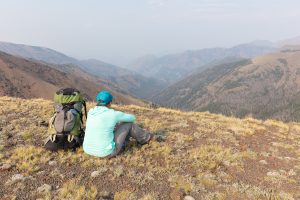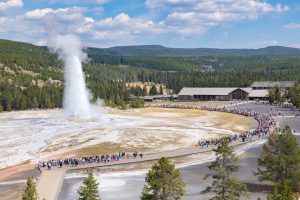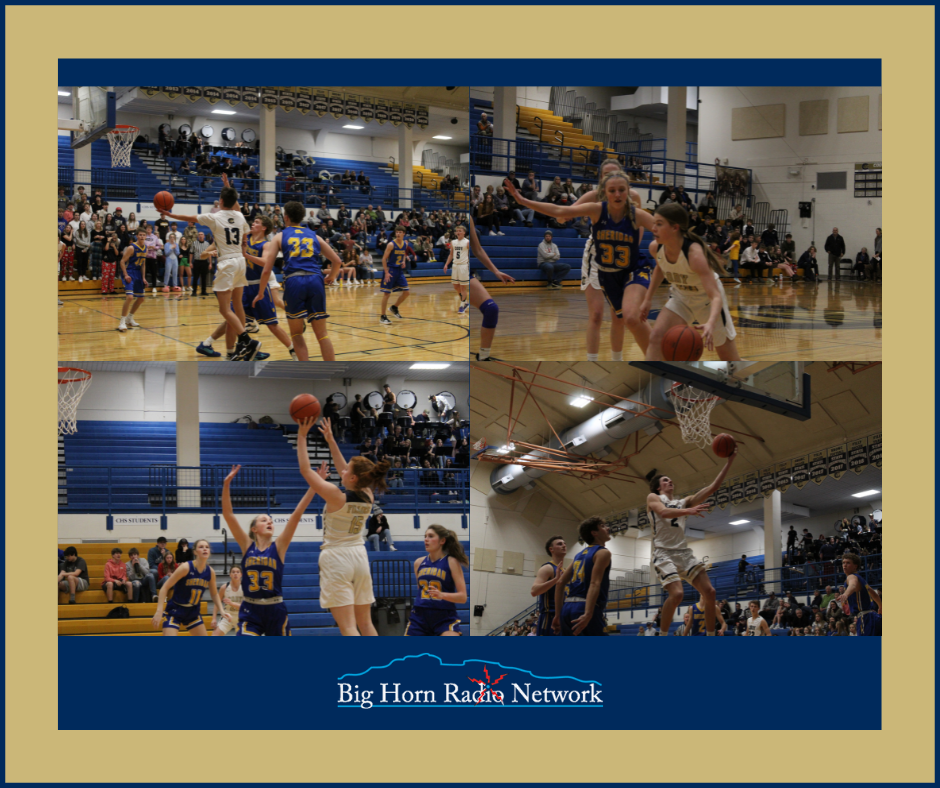Yellowstone: Nearly 5 Million “Visits” Recorded in 2021
Written by Andrew-Rossi on January 24, 2022
The visitation numbers in Yellowstone National Park make it the busiest year in the park’s 150-year history – but these numbers don’t tell the whole story.
Yellowstone officials released the overall visitation numbers for 2021 on Friday, Jan. 21. It’s the final tally for a year of record-breaking months and nearly – but not quite – five million visits.
Overall, Yellowstone National Park hosted 4,860,537 recreation visits in 2021.
Visitation in 2021 is up 28% from 2020 (3,806,306 visits.) Over one million additional visits make 2021 the busiest year in the park’s 149-year history (Yellowstone’s 150-year anniversary will be March 1)
In 2021, visitation for May, June, July, August, and September was the busiest on record. July was the most-visited single month on record in Yellowstone’s history and the first time visitation exceeded 1 million visits in a single month.
The list below shows the year-to-date trend for recreation visits over the last several years:
- 2021 – 4,860,537
- 2020 – 3,806,306*
- 2019 – 4,020,288
- 2018 – 4,115,000
- 2017 – 4,116,524
- 2016 – 4,257,177
But record-breaking numbers don’t tell the whole story, as one visit doesn’t necessarily mean one person.
The park accurately counted 4.86 million visits in 2021. However, a close analysis of visitor use data shows that over 350,000 vehicles re-entered the park in 2021 compared to 2019 – the year before the COVID-19 pandemic.
This is likely due to approximately 20% fewer overnight stays in the park during the year. Due to a variety of factors including construction projects and COVID-19, the park had approximately 20% fewer campsites and hotel rooms available in 2021 compared to previous years.
A drop in overnight stays means more visitors left the park for the night and returned the next day than in previous years, staying in gateway communities like Cody.
Additionally, statistical categories reveal 2021 was less busy than the visitation statistics reflect. Numbers collected from other aspects of the park – trail counters, the tonnage of trash, water usage, and public safety calls – showed visitor-use levels more comparable to 2019, when the park counted four million visits.
These numbers are a reminder that Yellowstone can accurately count visits – not visitors.
The park is evaluating improved software that can more reliably and accurately differentiate new visits versus the same visitors entering the park multiple times.
A busy but comparable year in Yellowstone will assuage the fears of many people who think the park may be close to reaching capacity.
Yellowstone Superintendent Cam Sholly says fears of “too many visitors” are unfounded when considering the size of the park. Yellowstone’s road corridors and parking areas equate to less than 1,750 (0.079%) acres of the park’s 2.2 million acres. Most visitors stay within half a mile of these major corridors.
Yellowstone’s visitor use strategy, developed in 2019, focuses on the impacts of increasing visitation on:
- park resources
- staffing, infrastructure, and operations
- visitor experience
- gateway communities, including economic and recreational access.
Currently, the park is concentrating on the most congested areas: Old Faithful, the Midway and Norris Geyser Basins, the Canyon rims, and Lamar Valley.
The park has developed a comprehensive resource tool to monitor and respond to impacts on resources. The park piloted an AV shuttle system in 2021, moving over 10,000 visitors at Canyon Village and testing technology that could be used in the future.
A major shuttle feasibility study is currently underway to analyze the viability of a shuttle system in the Midway Geyser Basin corridor. The park is also taking advantage of data derived from recent major visitor surveys and transportation studies.
Yellowstone and Grand Teton National Parks are working together to find mutually beneficial solutions, as both Wyoming parks share visitors throughout the year.
Yellowstone has completed over $100 million in projects over the past two years. These projects have improved transportation infrastructure, reduced traffic congestion, and enhanced visitor experiences.
Substantial additional investments will continue in 2022 and 2023 in multiple areas of the park as part of funding received from the Great American Outdoors Act.
More data on park visitation, including how Yellowstone staff calculate these numbers, is available on the NPS Stats website.



